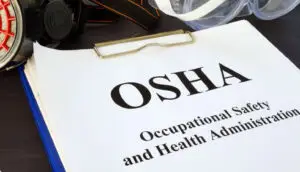What Are Your Next Steps

Receiving a serious Cal/OSHA violation or a whistleblower complaint can be a daunting experience for any business. These situations can disrupt operations, damage your reputation, and lead to significant financial penalties. It’s crucial to understand your options and take immediate action to protect your business.
The first step is to fully comprehend the allegations or citation.
- Review the Citation or Complaint: Carefully examine the details of the Cal/OSHA violation or the whistleblower complaint to understand the specific safety standard violated, the alleged misconduct, or the proposed penalty.
- Consult with Legal Counsel: Seek advice from an attorney experienced in labor and employment law, specifically with Cal/OSHA regulations and whistleblower protections.
- Assess the Situation: Determine the severity of the violation or complaint, the potential impact on your business, and the likelihood of employee injury or illness.
Developing a Response Plan
Once you have a clear understanding of the situation, you can develop a response plan.
- Immediate Corrective Action: If a Cal/OSHA violation has been issued, take steps to address the safety hazard as quickly as possible. Document your actions and create a timeline for completion.
- Investigate the Whistleblower Complaint: If you’ve received a whistleblower complaint, conduct a thorough and impartial investigation to gather facts and determine the validity of the allegations.
- Dispute the Citation or Complaint: If you believe the citation or complaint is unjustified, consider contesting it. You may have a specific timeframe to file a notice of contest or respond to the complaint.
- Negotiate a Settlement: In some cases, it may be possible to negotiate a reduced penalty or settlement agreement.
- Implement Preventative Measures: Beyond addressing the specific violation or complaint, review your overall safety program and whistleblower policies to identify and correct potential issues.
Building a Strong Defense
If you decide to contest the citation or complaint, you’ll need to build a strong defense.
- Gather Evidence: Collect documentation, such as safety policies, training records, incident reports, and employee interviews, to support your case.
- Consult with Experts: Seek expert opinions to challenge the inspector’s findings or provide evidence to refute the whistleblower’s allegations.
- Prepare for the Hearing: If the case proceeds to a formal hearing, prepare your witnesses and evidence to present your side of the story.
Preventing Future Issues
To avoid future Cal/OSHA violations or whistleblower complaints:
- Strengthen Safety Culture: Foster a safety-first culture within your organization.
- Invest in Training: Provide comprehensive safety training to all employees, including training on whistleblower rights and responsibilities.
- Conduct Regular Inspections: Perform routine safety inspections to identify and address hazards.
- Establish a Whistleblower Complaint Process: Develop a clear and confidential process for employees to report concerns without fear of retaliation.
- Stay Informed: Keep up-to-date with Cal/OSHA regulations and whistleblower laws.
Facing a Cal/OSHA violation or whistleblower complaint can be a complex process. It’s essential to take proactive steps to protect your business and maintain a safe workplace. By understanding your options and seeking expert guidance, you can navigate these challenges effectively.
Disclaimer: This blog post is intended for informational purposes only and does not constitute legal advice. It is essential to consult with an attorney for guidance on your specific situation.
Contact SafetyNet for expert assistance with Cal/OSHA compliance and whistleblower investigations. 877-354-5434 or go to https://safetynetinc.com/contact-us/
Would you like to add more specific information, such as common Cal/OSHA violations or tips for specific industries?
